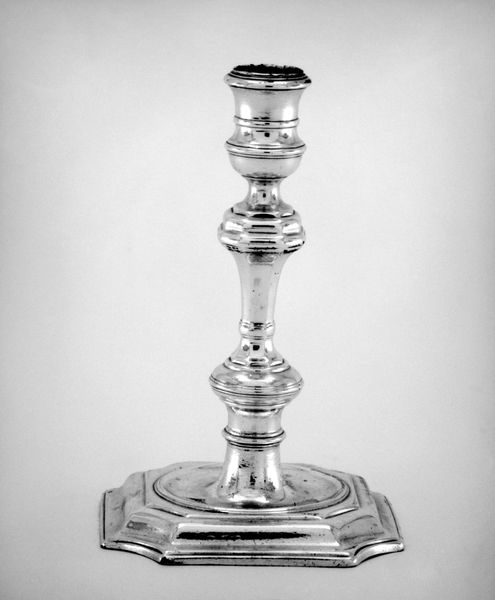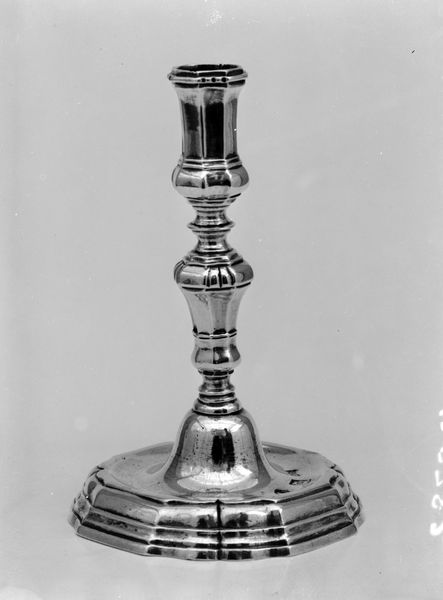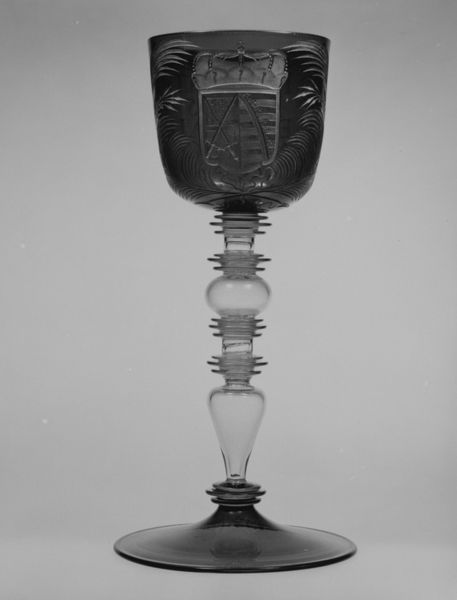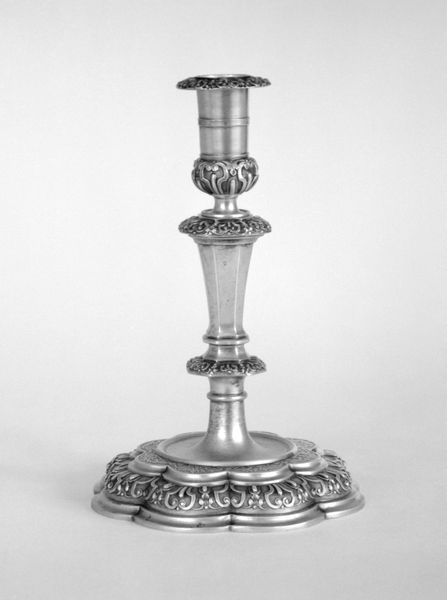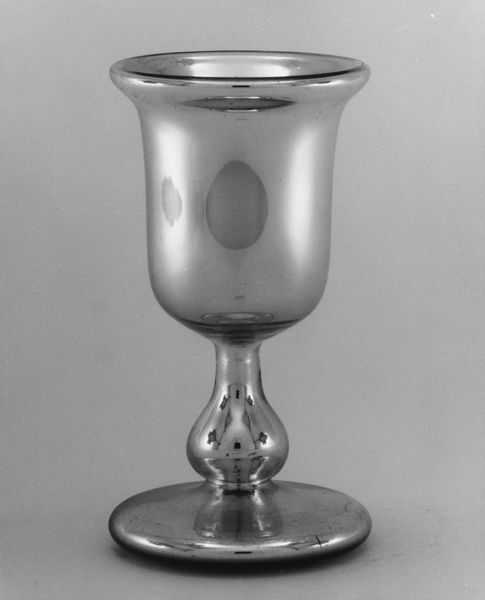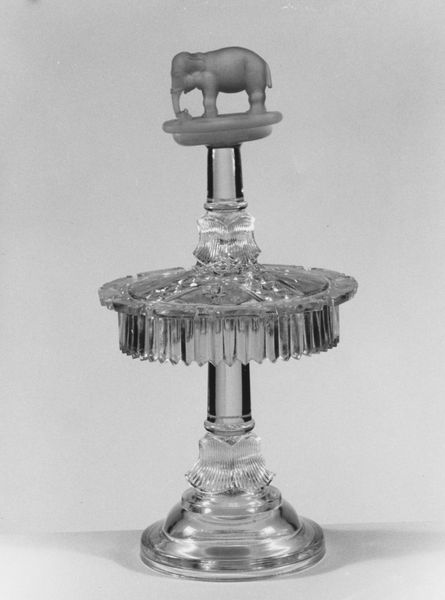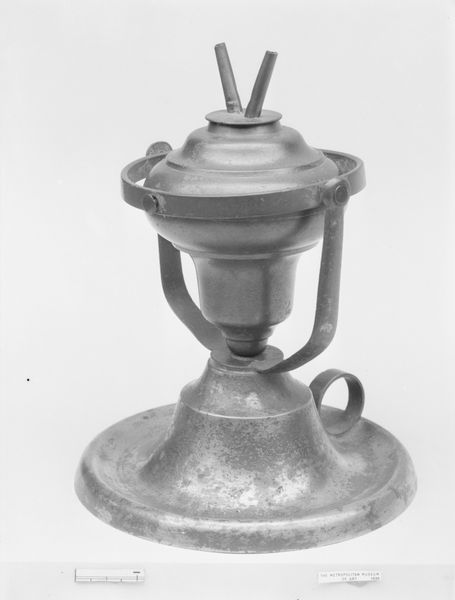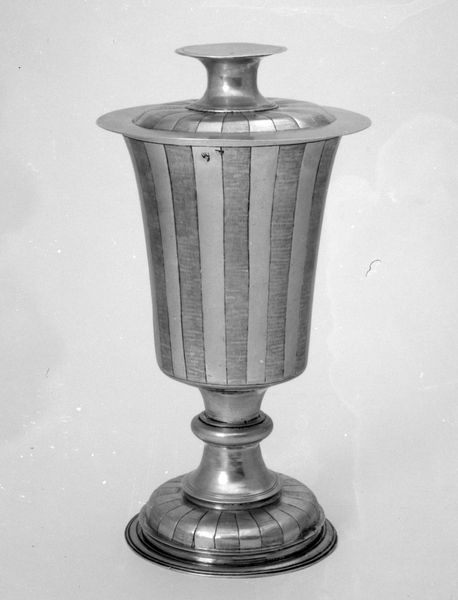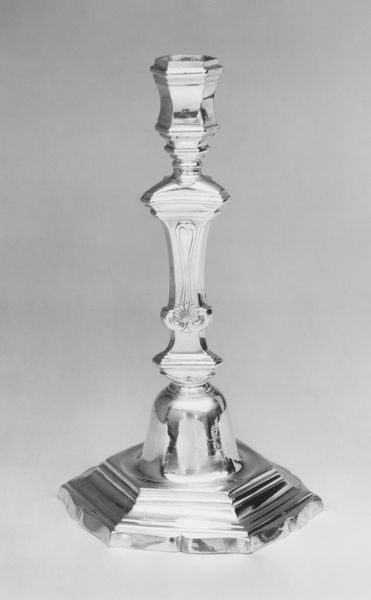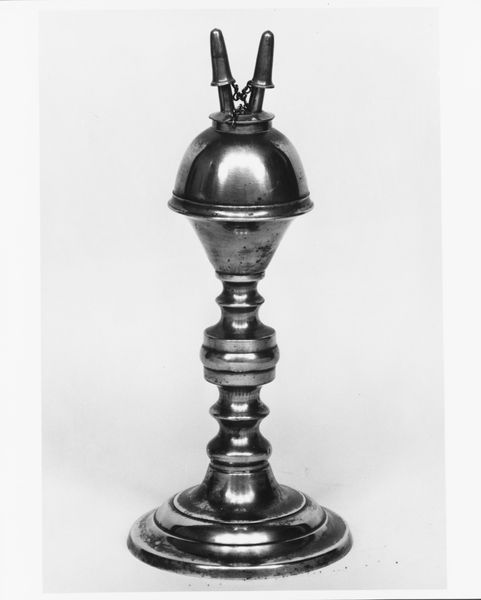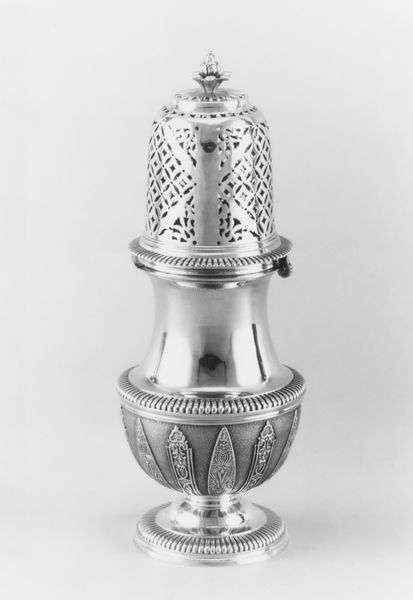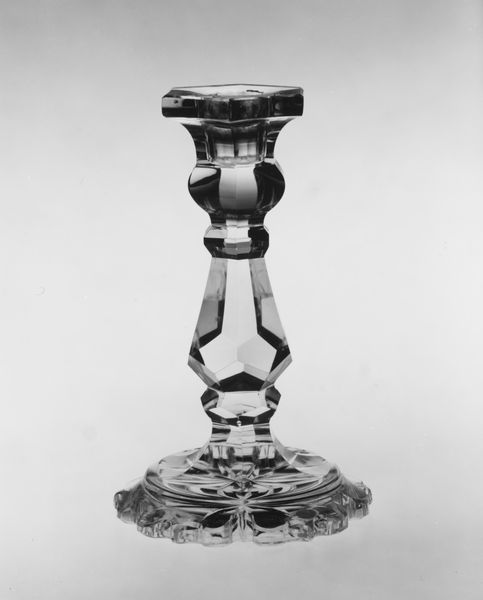
metal, glass, sculpture
#
metal
#
sculpture
#
glass
#
sculpture
#
black and white
#
united-states
Dimensions: Dimensions unavailable
Copyright: Public Domain
Editor: So this is “Lamp,” made by Challinor, Taylor and Company between 1870 and 1890. It's glass and metal, currently held at the Metropolitan Museum of Art. I'm struck by how modern the base seems with its marbled black and white design, almost like something from the mid-century, but then the top looks more traditional. What stands out to you about this piece? Curator: What captivates me is the interplay between light and shadow embedded within the lamp's structure. The marbled base, reminiscent of swirling eddies, it is a dance between chaos and order, very popular in Victorian aesthetic. Does it evoke a particular emotion, a sense of familiarity perhaps? Editor: It does feel kind of dizzying! But in a controlled way. The swirling is very pretty, even though it only uses black and white. Why do you think this effect was so popular back then? Curator: Such decorative styles offer a sense of movement and dynamism during an era marked by rapid industrialization and social change. But even deeper than this, it evokes our constant state of change: that while time appears linear, it spirals upon itself endlessly. The lamp isn’t just a source of light, but also reflects the psychological currents of the era, its hope and anxiety. Editor: Wow, I never would have thought a lamp could contain so much meaning! Curator: Everyday objects are testaments to the past. Each curve, color choice, or material embodies not just aesthetics, but deeply ingrained cultural values. Editor: That gives me a whole new appreciation for what art, even functional art, can tell us about history. Curator: Indeed. By exploring the iconography embedded within objects, we begin to understand a culture’s dreams, fears, and enduring beliefs.
Comments
No comments
Be the first to comment and join the conversation on the ultimate creative platform.
